
Stunning 'FTS Purple Ambush' Venus Fly Trap Plant eBay
The Venus flytrap is an evergreen plant with rosettes of leaves. Each leaf has a flat stalk and ends in a trap. The trap has a reddish centre and is lined with teeth. It has tiny, white flowers that cluster at the top of leafless stalks. In the winter months, the Venus flytrap goes dormant; it reduces its number of carnivorous leaves and stores.
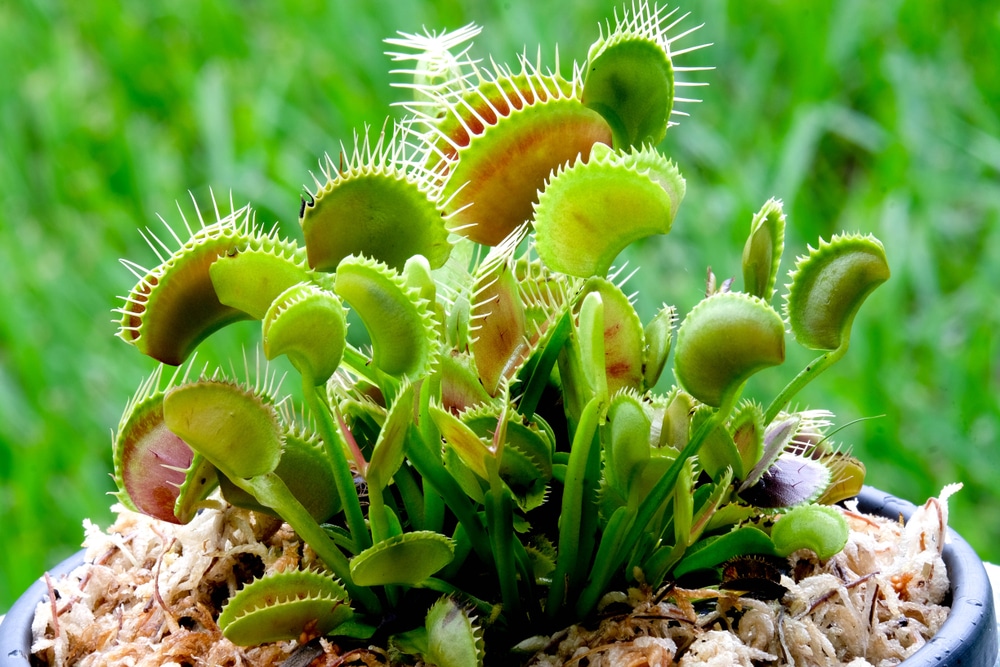
Venus Fly Trap Care & Growing Tips In The UK UpGardener™
Of course, the Venus flytrap uses a snap trap to catch its prey. Learn more about how it works below. The Venus flytrap: "one of the most wonderful plants in the world." — Charles Darwin in his book Insectivorous Plants,1842. Venus Flytrap Care Basics. Venus flytraps are almost extinct in their native environment.

Purple Venus Fly Traps Photo by Percymac95 Photobucket
Purple Haze is an offspring of the cross 'Low Giant' and 'Akai Ryu' produced in 2005. It grows low to the ground year round, can get larger than average, and will stay dark purple in coloration if grown in good light. It is a genetically somewhat smaller plant than the "giant" flytraps. Purple Haze is a very nice red-leafed Venus flytrap.
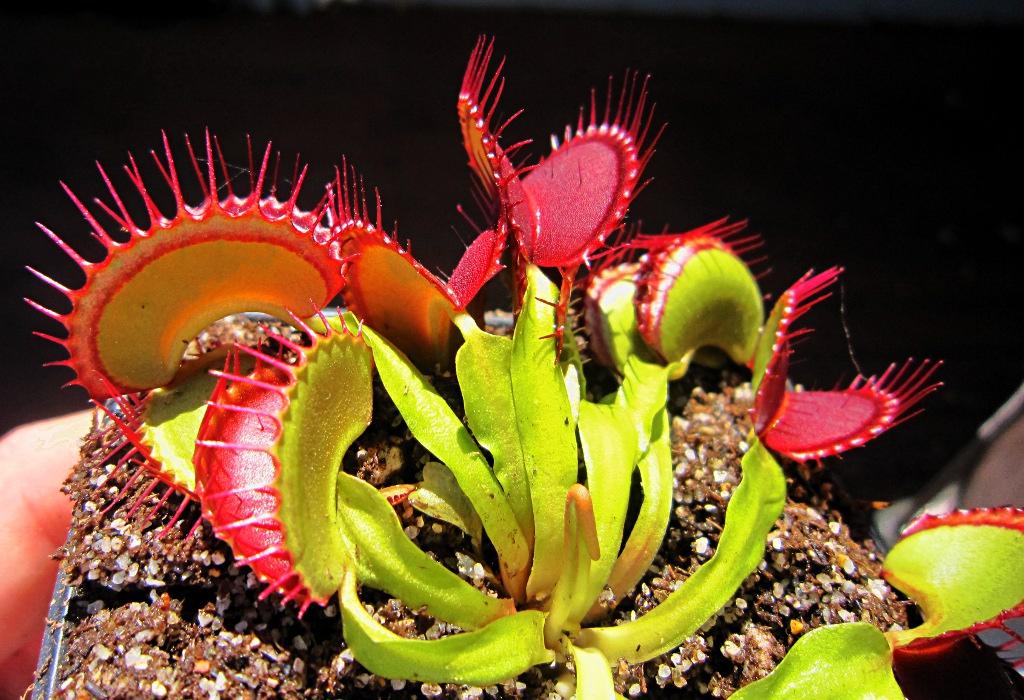
FTS Deep Red Guerrilla and Purple Ambush Flytraps Photos of Venus Fly
Each trap is actually two modified leaves attached by a hinge, and your plant can have up to eight. (The purple pitcher plant is also one of few carnivorous plants with modified leaves).. Propagating Venus fly trap by flower stalk: Timing is everything: Keep a close eye on your Venus fly trap as it starts to grow a tall flower stalk, usually.
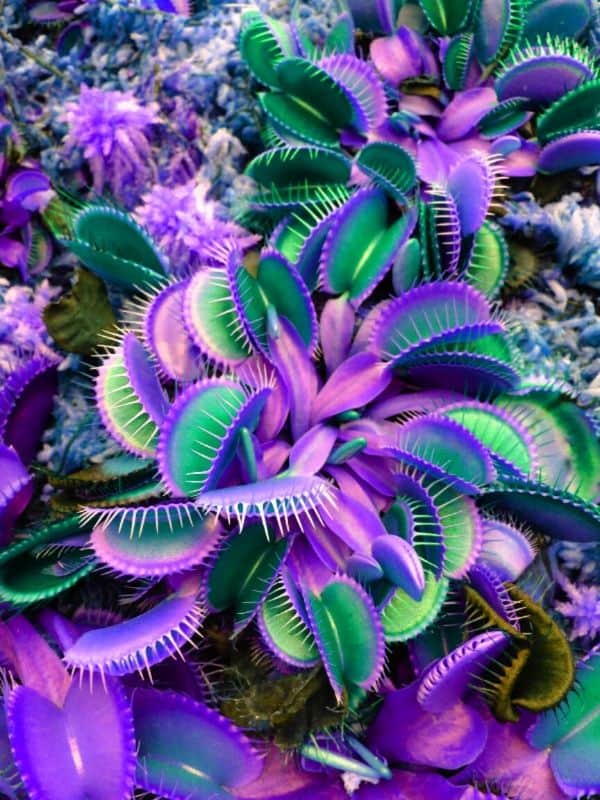
Where Can I Buy a Venus Flytrap? How Expensive Are They? Unica Plants
6. Make sure your plant gets enough sunlight. As stated previously, Venus fly traps need at least four hours of direct sunlight during their growing periods. Aside from 'eating' bugs, traps rely on photosynthesis to grow and stay healthy. Put your plant in a spot where it will receive at least 12 hours of sunlight.
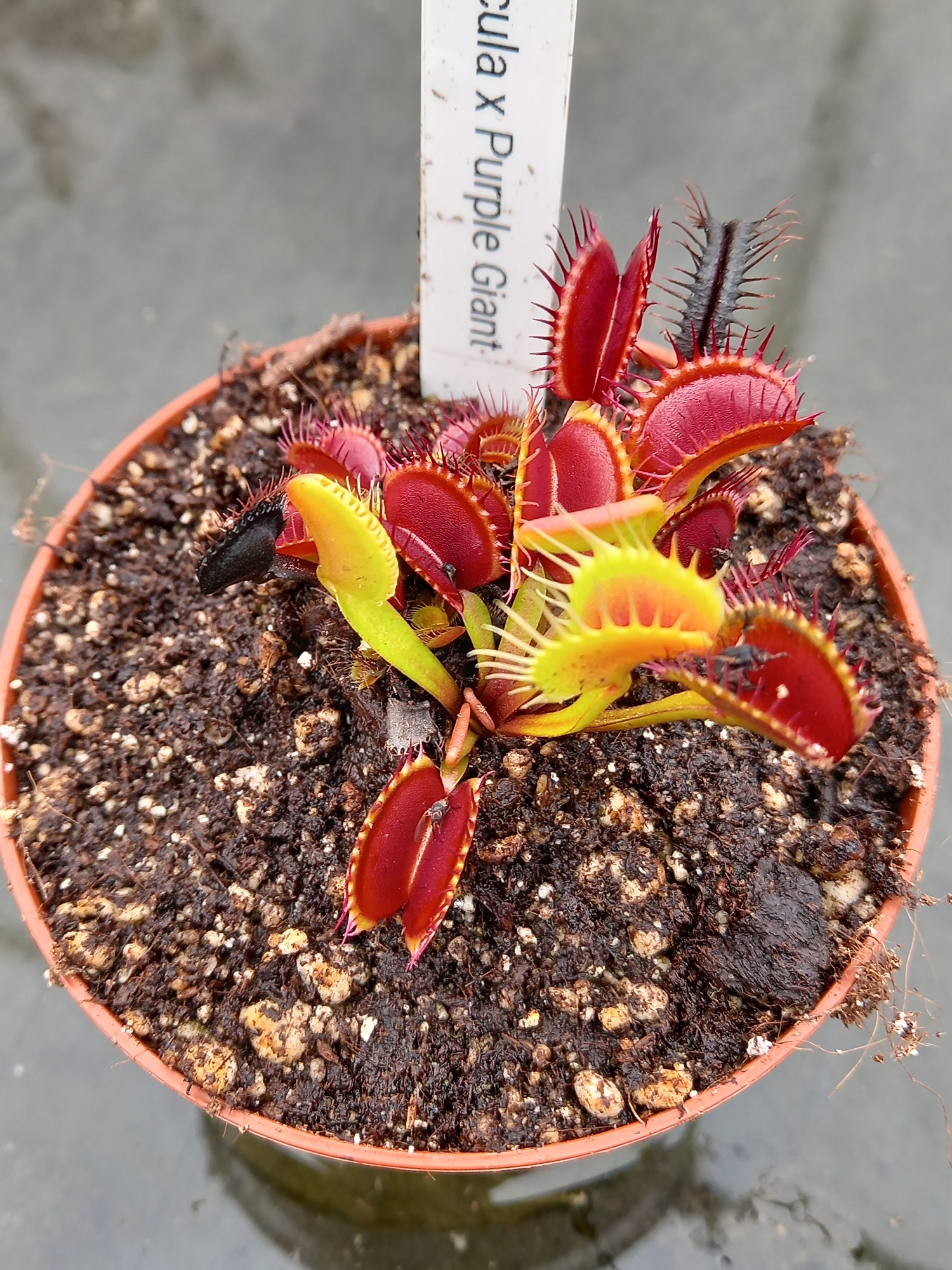
Purple Venus Fly Trap ubicaciondepersonas.cdmx.gob.mx
A carnivorous plant might seem impossible, but the Venus fly trap (Dionaea Muscipula) exists to challenge that notion.It is a notoriously tricky carnivorous plant to keep and grow. Although named after Venus, the goddess of love and beauty, this mysterious plant isn't exactly kind or loving. On the other hand, Charles Darwin described the plant as "the most wonderful" because of its.

Purple Venus Fly Trap ubicaciondepersonas.cdmx.gob.mx
FTS Purple Ambush is certainly an eye-catcher that is worthy of a place in anyone's Venus fly trap collection. A low-growing plant, beautiful ground-hugging, deep purple traps create a striking contrast with the green leaves. It is a plant that will turn some heads! It is a genetically somewhat smaller plant than the "giant" flytraps. Purchase.

Venus Flytrap Purple Carnivorous Plant Venus Fly Trap Grow Etsy UK
Depending on the species, the inside of the trap can be red, light burgundy, pink, green, or purple. Venus flytrap lobes trap insects.. Venus Fly Trap Temperature and Humidity Requirements. A Venus flytrap requires at least 60 percent relative humidity to flourish. If you sit the potted Venus flytrap on a water tray, the evaporating water.

Venus Fly Trap, Great Wave, Cotton Fabric, Sold, Purple, Artwork, Work
Temperatures above 95F can dry out and burn Venus flytraps. Purple coloring: Neutral: Some varieties of Venus fly trap characterize with deep Burgundy colors which often look close to purple, like the Akai Ryu variety. Follow the link to learn more about fully red plants. Blue coloring: Negative: Blue Venus fly traps do not exist.

Stunning 'FTS Purple Ambush' Venus Fly Trap Plant eBay
Temperature for the Venus Flytrap. The Venus flytrap enjoys temperatures from 70° to 95° F as an outdoor plant and they do great in the summer heat. Average indoor temperatures are good for these plants. Ideal temperatures during the 3-4 months of winter dormancy will range from 35° to 50° Fahrenheit.
Does anyone know why my Venus fly trap has purple stems on the new ones
Venus fly traps do not need fertilising. Instead, feed fortnightly with live insects. Simply catch an insect such as a fly and then gently lower it into one of the traps, using tweezers. As soon as the fly comes into contact with the fine hairs in the trap, the trap will close. Do not force the trap shut - this can harm the plant.

Venus fly trap Venus Flytraps Photo (21387494) Fanpop
The Venus Flytrap is the most famous carnivorous plant. Learn how to care for Dionaea muscipula with this complete guide covering water, light, soil, and dormancy.. Darwin famously described the plant as "one of the most wonderful in the world," and few who have witnessed a healthy trap snapping shut on an insect would disagree. Venus.

Venus Fly Trap by sjthunder on deviantART Evergreen Groundcover
Venus fly traps are relatively low-maintenance plants to grow and care for and need full sun, moist acidic soil, and should be fed flies every 2 weeks. Venus fly traps do not need fertilizer and often turn dormant in Winter with the foliage dying back before regrowing in Spring. Feed Venus fly traps once every 2 weeks if they are not catching.

Venus Fly Trap Seeds from Mr Fothergill's Seeds and Plants
The world of plants is full of natural wonders, and one of these is the carnivorous Venus flytrap. This plant is unusual looking and has uniquely observable trait—it captures and consumes.
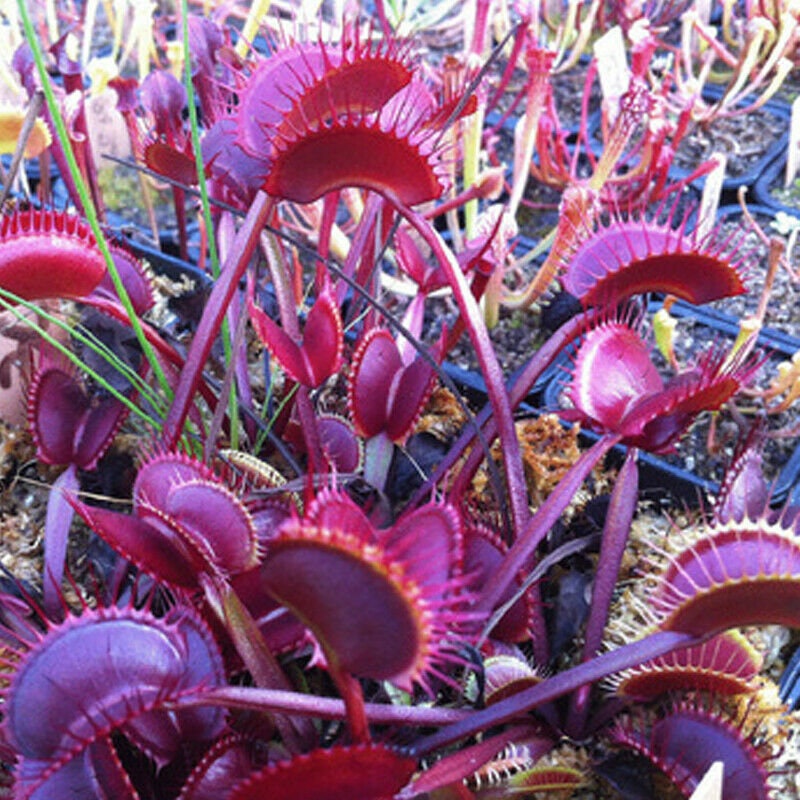
7 ALL RED VARIETY Venus Flytrap Seeds dionaea Muscipula Etsy Australia
Venus flytrap prefers a temperature of 70°F-95°F, although some varieties can survive 40°F in the winter with protection. For the best Venus flytrap care, keep the environment humid. Good air circulation is also important when growing Venus flytrap plants, so turn on a fan in the room where you keep them.

Purple Venus Fly Trap ubicaciondepersonas.cdmx.gob.mx
In the wild, Venus flytraps exhibit bright green and red colors. The leaves are green, and the inside of the traps is red or burgundy. Not all plants exhibit the same brightness in color; the colors can vary depending on the variety. For example, some of the traps in the photo below exhibit red coloring in the exterior part of the traps.